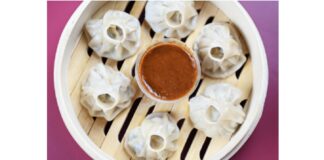
For years, food engineers, chefs, and home cooks have been searching for a no-fail solution to roasting a perfect turkey. In the 1960s, the pop-up timer was developed, promising to eliminate the guesswork out of turkey roasting, but the devices weren’t foolproof. Even today, home cooks continue to fall back on unreliable time-per-pound recommendations only to turn half-cooked legs and thighs and desiccated breast meat.
Now a major appliance manufacturer has unveiled what it claims to be the first ever true silver bullet. According to The Verge, GE has developed a software update for its smart ovens that claims the oven will deliver turkey perfection every time. Using the upgrade, appliance owners “put the bird in the roasting tin, pop it in a cold oven, insert the temperature probe built into the oven, push the Turkey Mode button (either on the LCD screen of the oven or in the GE Appliances SmartHQ smartphone app), and sit back and relax”:
There is no basting, stuffing, brining, fiddling with foil, preheating, or panicking about whether it’s over or undercooked. And most importantly, there is no math; whether the bird is 12lbs or 20lbs, Turkey Mode calculates the cook time and executes its cooking algorithms to bring the bird to 170 degrees a few hours later. And if you want to, you can monitor the turkey and temperature in real time through the app or LCD screen. When it’s ready, the oven timer will go “Gobble, gobble.”
So what’s the one catch to having an oven that announces “Gobble, gobble” when the turkey is done? You need first to own a G.E. smart range, which if you don’t already have one, can run as high as $1,800. That’s a lot to spend if like most people, roast turkey is a once-a-year occurrence in your home.
P.S. With Thanksgiving rapidly approaching, we aren’t going to leave you in the lurch here. If you’re in need of a good, reliable turkey recipe, we recommend this one by Ina Garten. The bird requires little tending, and the results are as good as you’re going to find in an imperfect world. One caveat: Use kitchen twine to tie the legs together. Don’t use ordinary household string, which can catch fire if exposed to high heat.














